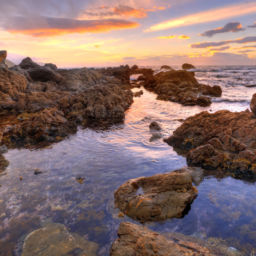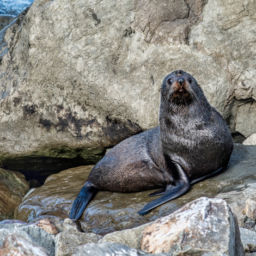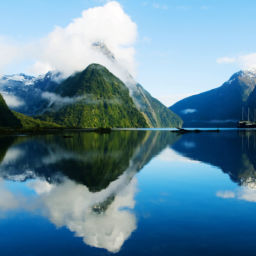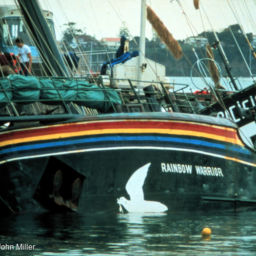Jacques Cousteau once claimed that the Poor Knights Islands have the best subtropical diving in the world. Although his geography was a little off — the Poor Knights Islands are located in a temperate zone — his confusion is understandable. Washed by a warm, tropical current, the waters abound with subtropical species, making scuba diving Poor Knights Islands one of the most unique dive experiences on the planet.
The Poor Knights Islands are New Zealand’s most famous dive destination. Located north of Auckland, off the small coastal town of Tutukaka, the Poor Knights Islands are bathed by the warm, clear waters of the East Australian Current (EAC), made famous in the film Finding Nemo. These warm waters bring subtropical species to the islands, which swim alongside temperate species in the kelp and sponge gardens around the islands. Because of this fascinating mix of species, the islands were declared a marine reserve in 1981.
Scuba diving Poor Knights Islands
I recently spent a week diving the Poor Knights Islands with Dive! Tutukaka. The islands are located 15 miles (24 km) offshore, so it takes around an hour to reach the dive sites. The crossing was never boring, with dolphins, seabirds, penguins and hammerhead sharks all making an appearance. The crew frequently sees sunfish, manta rays, seals, whales and orcas as well.
The terrain around the islands is breathtaking, featuring towering sea cliffs, caves, arches and rocky pinnacles. And most of these structures continue underwater, creating spectacular terrain. Each day I did two dives, and quickly found that most dive sites had options for beginners as well as more experienced divers.
Dive sites
Northern Arch — as you’d expect — features an impressive arch cutting through a rocky point. The bottom of the arch is at 125 feet (38 m), and the walls around it drop into 160 feet (50 m) or more. However, you needn’t go below 65 feet (20 m) to have a great dive. This amazing arch is overloaded with fish life, including snapper, kingfish and trevally, plus dense schools of very pretty pink and blue maomao. The dazzling walls of the arch are encrusted with colorful sponges, anemones, algae and bryozoans. One dive at this site featured a bronze whaler shark, a species often seen in deeper water.
We also dove at Middle Arch and Blue Maomao Arch, explored caves at Shark Fin Cave and Jan’s Tunnel, and investigated rocky, kelp-covered reefs and walls at Brady’s Corner, Magic Wall, Cleanerfish Bay and Dutch Cove.
Marine life
Each dive featured a variety of invertebrates — nudibranchs were especially common — and lots of friendly fish. Some species, common on the east coast of Australia, have different names here. The banded morwong is called the red moki and the eastern king wrasse is called the Sandager’s wrasse. But many of the fish are unique to this area, like cute little triplefins, perch and demoiselle. Temperate species like leatherjackets (filefish) and butterfly perch swim alongside subtropical species like the Lord Howe Island butterflyfish and the sharpnose puffer (black-saddled toby). Boarfish, scorpionfish, blennies, conger eels, butterflyfish and eagle rays were also on hand.
Stingrays are also very common at the Poor Knights Islands. Most dives featured smooth stingrays, known locally as the short-tailed stingray. At Cleanerfish Bay we found a cave with four huge stingrays, which also commonly gather in arches and caves over the summer months for breeding.
Even more impressive were the abundant moray eels. Most morays reside in tropical and subtropical regions but, surprisingly, seven species inhabit the Poor Knights Islands. I have never dived sites with so many morays, and not just hidden away in ledges, but out in the open and even draped over the kelp and sponges.
When to go
February — late summer in New Zealand — features pleasant water temperatures of around 70 F (21 C), but over the winter months it can drop to 60 F (16 C). Visibility typically varies from 40 feet (12 m) to 80 feet (25 m), but when the EAC pushes in, viz can top 100 feet (30 m).
The Poor Knights Islands are an incredible destination for underwater photographers, for either wide-angle or a closeup shots. The colors of the boulders are unforgettable, a rich tapestry of pinks, yellows, oranges, greens, reds and blues. On every dive my camera went into overdrive photographing the fish, morays, nudibranchs, stingrays and incredible structures. Diving in the Poor Knights Islands it’s easy to understand why Jacques Cousteau thought he was diving a subtropical paradise.














